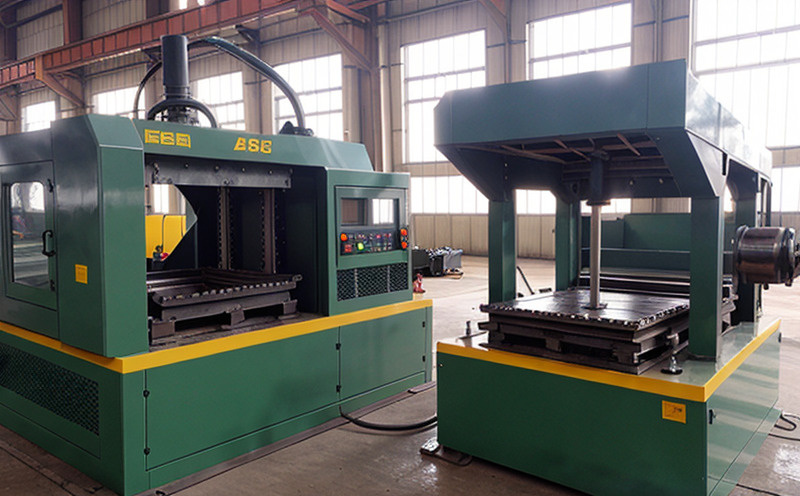JIS G0582 Ultrasonic Testing of Forged Steels
The JIS G0582 ultrasonic testing standard is a critical tool in ensuring the quality and integrity of forged steels used in industrial manufacturing. This test is particularly important for sectors such as automotive, aerospace, and heavy machinery where the reliability of materials directly impacts safety and performance. The standard specifies methods to detect flaws within the material by utilizing ultrasonic waves that interact with defects.
Forging processes involve shaping metal through localized compressive forces, which can introduce internal and surface imperfections. JIS G0582 provides a standardized approach to identify these flaws, ensuring compliance with industry standards and preventing potential failures in end applications. The test involves sending ultrasonic waves into the material and measuring their reflection or transmission characteristics.
For quality managers and R&D engineers, this testing method offers a non-destructive means of inspecting critical components before they are integrated into larger assemblies. This ensures that only defect-free parts proceed to subsequent stages of production. For compliance officers responsible for adherence to international standards, JIS G0582 provides a clear path towards meeting regulatory requirements.
The ultrasonic testing process typically involves the following steps: preparing the test specimen by ensuring its surface is clean and free from contaminants; selecting appropriate transducers based on the material type and thickness; calibrating the equipment to ensure accurate measurements; applying coupling agents to enhance wave transmission; scanning the surface or cross-section of the part; analyzing the resulting data for any anomalies indicative of flaws.
The ultrasonic testing parameters are carefully tailored to optimize detection capabilities. Factors such as frequency, pulse width, and dwell time are adjusted according to the specific requirements set forth by JIS G0582. The use of advanced equipment like A-scan and B-scan displays helps in visualizing internal structures and identifying potential issues.
In addition to flaw detection, JIS G0582 ultrasonic testing can also provide information on material thickness variations, grain structure analysis, and residual stress assessment. These additional insights are invaluable for R&D teams looking to refine forging processes or improve product design.
A key aspect of this service is the detailed reporting provided after each test session. Reports include comprehensive data on flaw locations, sizes, depths, and types, along with recommendations for further action if necessary. This ensures that all relevant stakeholders have a clear understanding of the condition of the forgings tested.
The importance of JIS G0582 testing cannot be overstated in industries where reliability is paramount. By adhering to this standard, manufacturers can build trust with customers and stakeholders while reducing maintenance costs associated with failures due to undetected flaws.
Why Choose This Test
The JIS G0582 ultrasonic testing method offers several advantages over other forms of inspection. Firstly, it is highly sensitive, capable of detecting very small defects that could otherwise go unnoticed through visual inspections alone. Secondly, being non-destructive, this test allows for repeated evaluations without compromising the integrity of the forgings.
For quality managers and compliance officers, choosing JIS G0582 ensures consistent adherence to international standards, thereby reducing risks associated with non-compliance penalties. R&D engineers benefit from obtaining precise data on material properties that can inform process improvements or new product development initiatives.
The ability to detect internal flaws early in the production cycle not only enhances product quality but also contributes significantly towards meeting customer expectations for reliability and longevity of components. This aligns with broader corporate goals aimed at improving overall operational efficiency and minimizing downtime caused by unexpected failures.
In summary, selecting JIS G0582 ultrasonic testing equips organizations with a robust framework for maintaining high standards of quality assurance throughout the manufacturing process. It supports strategic initiatives focused on enhancing customer satisfaction and fostering innovation within research & development teams.
Customer Impact and Satisfaction
The implementation of JIS G0582 ultrasonic testing has a direct positive impact on customers by ensuring that only the highest quality forged steels are supplied. This enhances customer confidence in products made from these materials, leading to increased trust between suppliers and buyers.
From an operational perspective, adhering to this standard helps businesses avoid costly recalls or warranty claims resulting from undetected flaws within components. It also enables more efficient supply chains by facilitating smoother transitions between stages of production without unnecessary delays caused by rejections during quality checks.
In terms of long-term relationships with customers, consistent application of JIS G0582 demonstrates a commitment to excellence in manufacturing practices. This translates into enhanced reputations for reliability and integrity among industry peers and end-users alike.
Moreover, the detailed reports generated from each testing session provide valuable feedback that can be used by both suppliers and clients to make informed decisions regarding future orders or adjustments needed in production processes. Such transparency fosters stronger partnerships built on mutual respect and shared goals.
Environmental and Sustainability Contributions
The JIS G0582 ultrasonic testing method contributes positively to environmental sustainability efforts by promoting efficient use of resources during the manufacturing process. By detecting defects early in the production cycle, this test helps prevent waste resulting from rejections or scrapping of defective forgings.
Furthermore, non-destructive evaluation techniques like JIS G0582 support sustainable practices by enabling thorough inspections without causing any damage to the materials being tested. This reduces energy consumption associated with unnecessary remanufacturing processes and minimizes emissions related to transportation of raw materials or finished goods.
Incorporating JIS G0582 into quality assurance protocols aligns with broader corporate sustainability initiatives aimed at reducing carbon footprints across all aspects of operations. The accurate identification of flaws ensures that only fit-for-purpose components enter the supply chain, thus optimizing resource allocation and contributing to overall efficiency gains.
By embracing this standard, manufacturers can demonstrate their commitment to responsible business practices while simultaneously meeting growing demands for environmentally friendly products from consumers and regulatory bodies alike.





